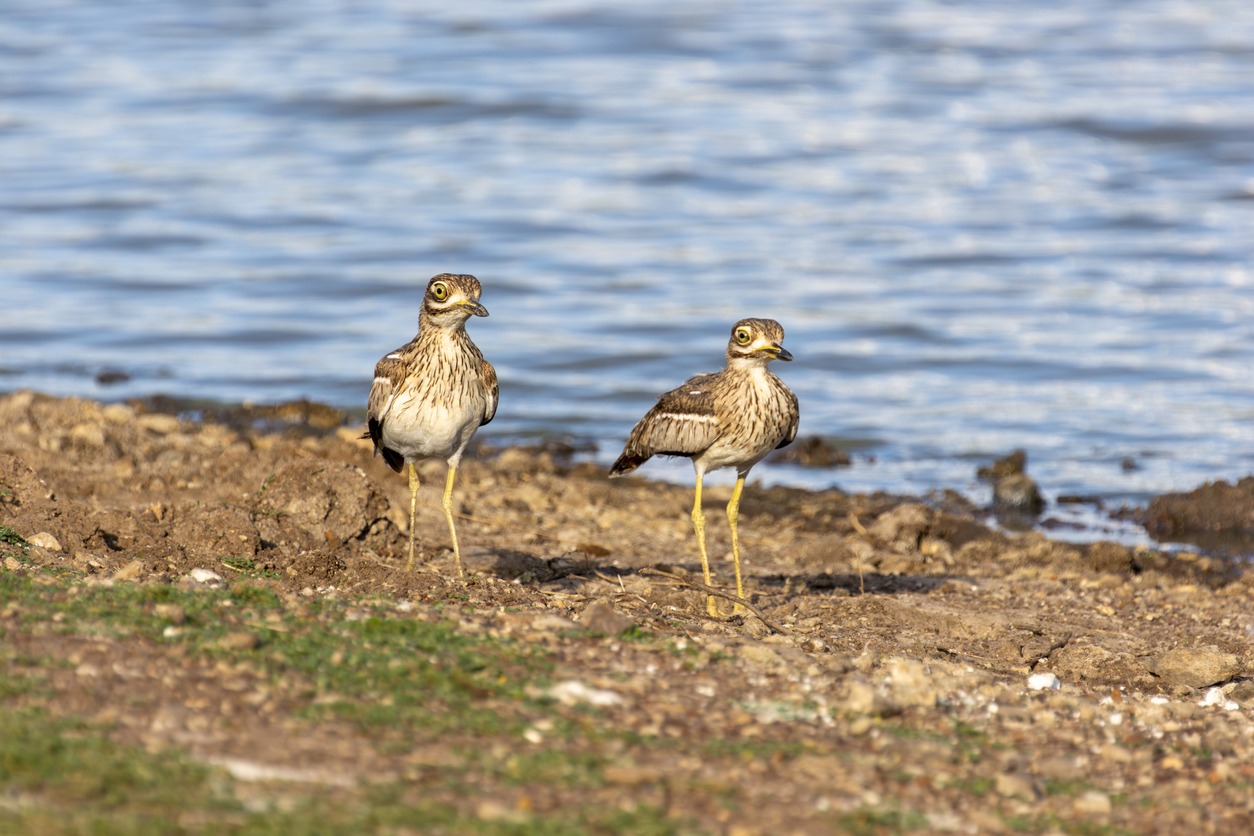Water Dikkops are small birds that live beside water sources such as rivers and swamps. Despite their small size, they have broad wings and long legs, which make them excellent flyers and runners.
Read further to know more about Water Dikkops!
What is a Water Dikkop?
The Water Dikkop, or also known as the Water Thick-Knee and Burhinus vermiculatus, is a species of bird that is categorized in the think-knee or stone-curlews family Burhindae. This family of bird species consists of medium to large birds, usually with bulging yellow eyes and yellow or black bills that give off a reptilian appearance. The bird species under the Burhindae family are present all over the world and are mainly nocturnal.
Its binomial name Burhinus vermiculatus came from the Greek word “Burhinus,” meaning a massive nose and Latin word “vermiculatus,” which means “decorated with worm-like markings and tracings.”
The Water Dikkop is endemic to sub-Saharan Africa, and they usually take refuge near water sources. Since there are no present threats that may jeopardize the Water Dikkop’s population in the African continent, the International Union for Conservation of Nature (ICN) Red List categorized this species as “Least Concern.” This categorization is given to certain species that are nowhere near extinction.
Its seven levels of scientific classification are as follows:
Kingdom: Animalia
Phylum: Chordata
Class: Aves
Order: Charadriiformes
Family: Burhinidae
Genus: Burhinus
Species: B. vermiculatus
This bird is called in numerous languages. Other variations of its name are as follows:
Xhosa: Ingqangqolo
Kwangali: Eswaita
Swazi: Umnkonkoni
Tsonga: Mtshikuyana
Dutch: Watergriel
French: Oedicnème vermiculé
German: Wassertriel
Portuguese: Alcaravão-d’ água
Physical description of a Water Dikkop
Just like most thick-knee bird species, the Water Dikkop is a small bird. It has a sharp, long black beak that has yellow streaks on the upper bill. Its plumage is chestnut brown to light brown with dark streaks on its wings. Its underparts are lighter than most parts of its body. Most of the time, it is white in color. Its long legs, or also known as thick knees, are white or brown in color.
Its head is distinguished by a band of dark brown feathers that start from the top of its head down to its neck. It has lighter feathers around the eyes, mostly white in color. The corners of its eye and the iris itself are bright yellow.
Its length is about 40 cm, and it has a wingspan of an average of 200 cm when fully-grown. It weighs 293-320 g.
Water Dikkop’s distribution and habitat
This bird species is endemic to the lowlands of sub-Saharan Africa. It is found in the following countries:
Angola, Burkina Faso, Burundi, Botswana, Central African Republic, Republic of Congo, Ivory Coast, Ghana, Kenya, Ethiopia, Malawi, Mozambique, Namibia, Niger. Zambia, Uganda, Tanzania, Swaziland, Zimbabwe, South Africa, and many more.
Water Dikkops are found on the edges of water bodies such as rivers, lakes, mangroves, dams, swamps, and beaches.
The behavior of a Water Dikkop
A Water Dikkop is a terrestrial feeder that hunts for food at night. It mainly feeds on insects, mollusks, termites, small fish, frogs, tadpoles, and crustaceans. This bird is highly nocturnal, but it can be very vocal during the daytime. Its cry sounds like “ti-ti-ti.”
Water Dikkops are excellent flyers. However, when faced with a threat, it prefers to use its long, strong legs to run than use its wide black wings to fly.
The Water Dikkops breed during the dry season and pre-rainy season. They are highly monogamous and solitary nesters. They create nests using a simple scrape on the muddy ground, which is outlined with dry mud, stone chips, and fallen leaves. Their nests are situated by the edge of a water source or near animal dung.
A female Water Dikkop lays 1-3 eggs during August-January. Both male and female Water Dikkops incubate these eggs for 22-25 days. Their eggs are off white in color with brown streaks.
Fascinating facts about Water Dikkops
Despite their small figures, did you know that the Water Dikkops is deemed to be the bravest birds in the world because it likes living with one of the world’s greatest predators, the Nile Crocodiles?
Some Water Dikkops live next to the abode of Nile crocodiles! In fact, few Water Dikkops would even dare to marshal crocodiles away from their nests.
BOTSWANA BIRDS | SOUTH AFRICA BIRDS
NAMIBIA BIRDS | ZAMBIA BIRDS | ZIMBABWE BIRDS

